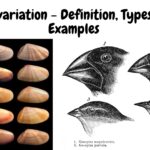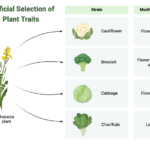What processes occur during the early stages of meiosis, including pairing of homologous chromosomes, crossing over, and condensation?
What processes occur during the early stages of meiosis, including pairing of homologous chromosomes, crossing over, and condensation?
Please login to submit an answer.
During the early stages of meiosis, several critical processes occur, particularly during prophase I, which is the most complex and lengthy phase of meiosis. Here’s an overview of the key processes:
1. Chromosome Condensation
As meiosis begins, the chromatin (the complex of DNA and proteins) condenses to form visible chromosomes. Each chromosome consists of two sister chromatids joined at a region called the centromere. This condensation is essential for the chromosomes to be properly segregated later in the meiotic process.
2. Pairing of Homologous Chromosomes
A hallmark of prophase I is the pairing of homologous chromosomes, which involves several steps:
- Homologous chromosomes (one from each parent) align along their lengths, forming structures known as tetrads or bivalents, which consist of four chromatids.
- This pairing is facilitated by a series of molecular interactions and structural changes that help homologs recognize and align with each other without entangling non-homologous chromosomes.
3. Crossing Over (Genetic Recombination)
Once homologous chromosomes are paired, they undergo crossing over, a process that occurs during the pachytene stage of prophase I:
- During crossing over, non-sister chromatids from homologous chromosomes exchange segments of genetic material. This process increases genetic diversity by creating new combinations of alleles on each chromosome.
- The physical manifestation of crossing over is visible as chiasmata, which are points where chromatids are intertwined and have exchanged genetic material.
4. Formation of the Synaptonemal Complex
To stabilize homologous pairs during crossing over, a protein structure called the synaptonemal complex forms between the paired homologs:
- This structure facilitates the close alignment necessary for crossing over to occur and helps maintain the connection between homologous chromosomes throughout prophase I
- Share on Facebook
- Share on Twitter
- Share on LinkedIn
Helpful: 0%




